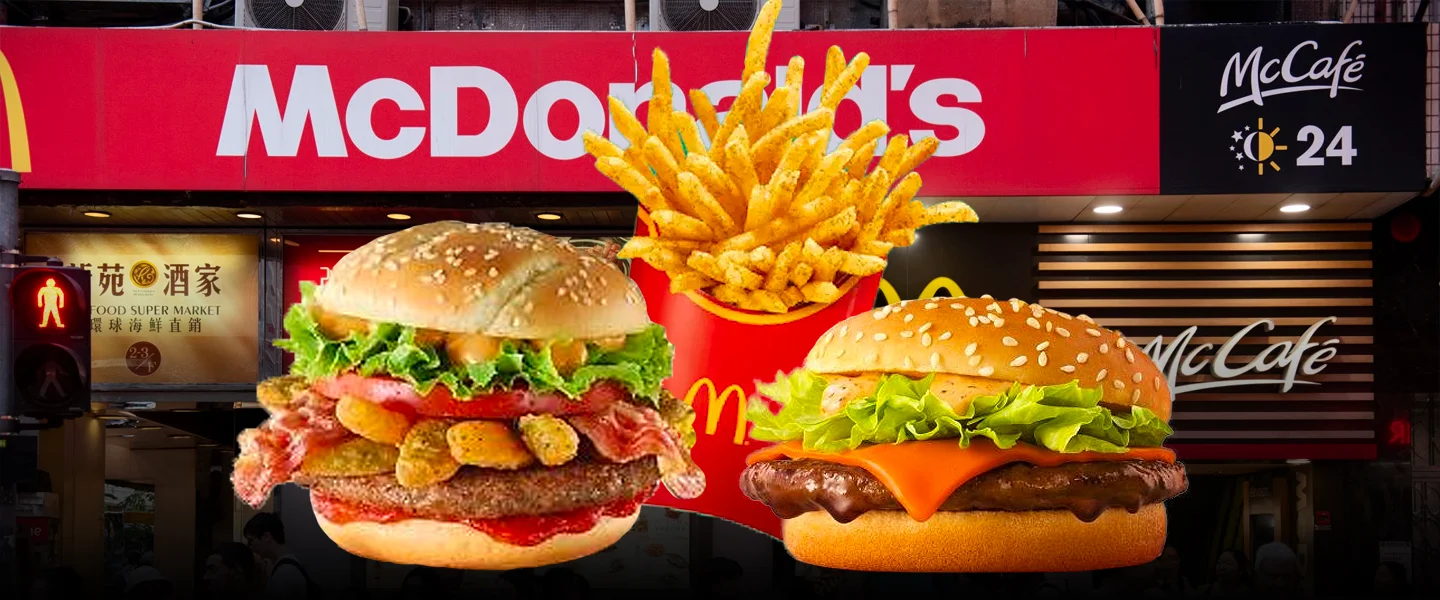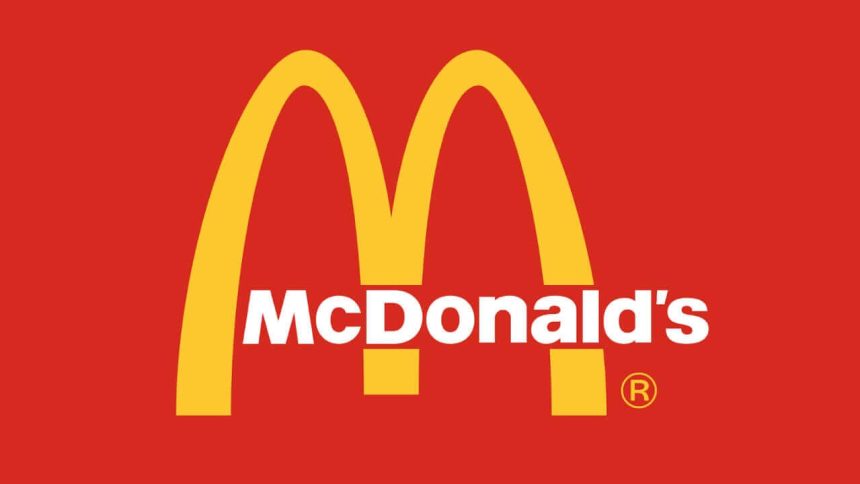Imagine this: golden fries crackling, the whir of a drive-thru alive with activity, and those unmistakable Golden Arches shining bright against the horizon. Under that legendary icon, McDonald’s is not merely serving burgers it’s redefining what it takes to reign supreme in the fast-food universe. Each and every day, 40 million individuals in over 100 nations walk through the doors of a McDonald’s, a testament to a 70-year-old brand that won’t age.
How does the 1950s-born business continue to have its edge in 2025? It’s the story of bringing together the comfort of tradition with the thrill of innovation think AI-based ordering systems humming alongside the introduction of plant-based burgers; even meat-lovers can’t resist.
Introduction: A Legacy of Human Testimony
In 2025, McDonald’s is forecasting a 2.76% rise in comparable sales, coming off an already-record 2024. Not bad for a giant in its seventh decade of existence. So, what is the secret sauce? It’s a relentless pursuit to reinvent itself: menus crafted to suit local tastes (like India’s spicy McAloo Tikki or Japan’s otherworldly matcha sundaes), clever tech that’s making every pit stop even faster, and a growing emphasis on sustainability that’s catching everyone’s eye. This is beyond fast food it’s a glimpse into how a legacy brand keeps winning hearts (and stomachs) in a world that’s always changing.
Global Domination: A World Tour of Flavor
McDonald’s didn’t happen to become a global leader—it’s an exercise in having the ability to stick to the plan and being willing to stray from it as well. The corporation has spread to over 100 countries and has been hosting a record-breaking 69 million visitors a day since they first hung one of their global flags in Canada in 1967. It is the talent for looking comfortable and fresh wherever you are that makes it work. Eat a Big Mac in New York, and it tastes exactly like the same juicy classic enjoyed in Paris. Walk into a McDonald’s, though, in the Middle East, and you can have the McArabia, with chicken and spices stuffed in flatbread. Japan? Teriyaki Burger beckons with sweet-savory zip.
This pas de deux of standardization and localization is McDonald’s secret strength. The essential menu—Big Macs, Chicken McNuggets, those can’t-be-missed fries is familiar everywhere on the planet. But by adding local flavor, McDonald’s doesn’t just accommodate; it belongs. That’s why a kid in Tokyo may be craving a matcha sundae while a Delhi family devours a McAloo Tikki. This isn’t just expansion—it’s a global love affair, one burger at a time.

Key Milestones That Shaped the Journey
- 1948: The “Speedee Service System” hits the scene in San Bernardino, California, turning fast food into a lightning-fast reality. Burgers, fries, and shakes in minutes? That’s the spark that started it all.
- 1955: Ray Kroc, a milkshake-machine salesman with big dreams, franchises the first U.S. location, lighting the fuse for McDonald’s explosive growth.
- 1990: The Moscow opening is pure chaos in the best way. Over 30,000 customers flood in on day one, proving the Arches can shine anywhere, even behind the Iron Curtain.
- 2025: Enter the “McValue” menu, a bold move to reclaim the throne of affordability. In a world where every penny counts, McDonald’s is betting big on value and it’s a safe bet they’ll win.
The Financial Engine: More Than Just Burgers
Behind the counter, McDonald’s is not a restaurant chain it’s a money machine fueled by a franchise system that’s as shrewd as it is profitable. Over 90% of its 40,000+ restaurants are owned and operated by franchisees, so McDonald’s receives a steady stream of royalties, rent, and fees without ever having to break a sweat.
In 2022, system-wide sales exceeded $100 billion, and by 2024, the firm was enjoying a 46.3% operating margin a number they’re determined to hold in 2025. But the real genius? Real estate. McDonald’s has choice locations all over the world and leases them to franchisees, building a vault of assets worth billions.
Why This Machine Keeps Humming
- Steady Cash Flow: Franchise fees alone make up about 40% of McDonald’s revenue. It’s like a subscription service predictable, reliable, and oh-so-lucrative.
- Big Scale, Bigger Savings: With a global supply chain fine-tuned over decades, McDonald’s keeps costs low and quality high, passing the savings to customers and profits to the books.
- Happy Shareholders: In 2022, the company handed back $6 billion through dividends and stock buybacks. That’s the kind of love that keeps investors smiling.
It’s not just about flipping burgers it’s about building an empire that runs like clockwork, even when the world gets messy.
2025: The Year to Prove It
As McDonald’s strides into 2025, the road ahead isn’t all smooth sailing. The stakes are high, and the challenges are real. Here’s what’s on the table:
1. Health & Safety: Rebuilding Trust One Bite at a Time
And then, in 2024, an E. coli outbreak traced to Quarter Pounders shook the brand. Consumers hesitated, regulators closed in, and McDonald’s knew it had to act fast. The solution? A top-to-bottom health overhaul. The plant-based McPlant is being given a bigger platform, with new flavors to win over even the skeptics. Calorie-conscious options are emerging, too, giving people a lighter path to loving McDonald’s. But here’s the rub: How do you placate the Big Mac brigade while wooing the wellness warriors? It’s a balancing act, and every bite counts.
2. Sustainability: Green Goals, Big Pressure
McDonald’s has pledged to achieve net-zero emissions by 2050 a lofty goal that has everyone watching. That means reimagining supply chains, slashing plastic waste, and proving that fast food can be sustainable. The clock is ticking, though. Critics are saying the pace is too slow, and eco-conscious eaters are already taking their business (and their values) elsewhere. In 2025, McDonald’s needs to show that it’s not all talk it’s action. The planet (and the bottom line) are waiting.
3. Labor & Economic Heat: Keeping the Crew Cooking
Franchisees are feeling the pinch—wages are up, workers are scarce, and inflation’s biting hard. Add in geopolitical chaos in places like the Middle East, and the margins start to sweat. Meanwhile, rivals like Burger King are swinging back with slick tech upgrades and wallet-friendly deals. For McDonald’s, 2025 is about keeping the team strong and the prices right—because in this game, you’re only as good as your last fry.
Conclusion: The Arches Are Here to Stay
McDonald’s is not a fast-food king it’s a survivor, a chameleon, a friend you can count on for a quick bite wherever life takes you. In 2025, it’s doubling down on what’s working: value through the McValue menu, a lighter footprint, and technology that makes every order seem like magic. But the key? Being agile. Health trends shift, workers demand more, and the world keeps spinning faster every day. McDonald’s knows that it cannot live on yesterday’s triumphs.
So, as the fryers hum and the Arches glow, one thing is for sure: McDonald’s is here to stay. It’s flipping the next burger, dreaming up the next innovation, and proving that even at 70 years young, it still has plenty of fire in its belly. To the Golden Arches not just a symbol, but a promise that fast food can still taste like home, wherever you are.









